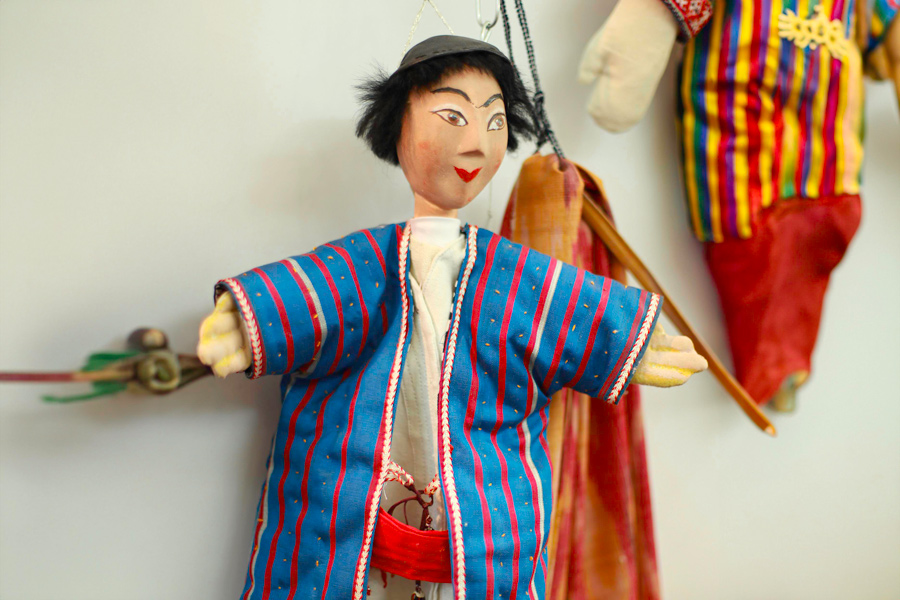
In the childhood, all of us had a chance to see a show of puppet masters at least once. This kind of theater art has an ancient history. Puppet shows were common in the Middle East and the Mediterranean as far back as 1st millennium BC.
In Central Asia, puppet theater gained popularity during the reign of the Achaemenid dynasty and the subsequent conquest of the Greeks. At all times markets and squares of the Central Asian cities hosted shows by puppet masters. Often it was a way to pour ridicule on the rulers and greedy bureaucrats, and sometimes shows were based on myths and legend or the love stories. The modern puppet theater can be divided into a theater, where people control the puppets, keeping them on a pole, or dressed like a glove and a theater where the puppets are controlled from the top, like a puppet.
The Puppet Theater did not obtain a widespread acceptance until the XIV century under Timur and the Timurids, when the state was flourishing with all forms and genres of art, including theatrical and entertaining ones. In the Middle Ages there were three common types of puppet theaters: glove theatre (or kul-kugirchok or chodir jamol), fantoccini ( chodir khayol ) and shadow show (fonus khayol).
The glove puppets were the most common, as they presented the most portable and simple puppet theater. The plots for the performances was a real life, while the main character was Palvan Kachal.
In the fantoccini, puppet dolls were set in motion by means of threads. This is the only theater that was able to show hundreds of puppets at once, fantoccini were often held in the evening: the actors being over the puppets operated them with the help of laces (rishta).
The shadow show was associated with the court and the clergy, so it was not very popular among the common people. The themes of its performances were philosophical and, in one way or another, connected with Sufism, so they were complicated to understand. In the late XIX - early XX centuries the shadow show has lost its importance, because the ideas of materialism and the spirit of revolutionary struggle began already to penetrate into the territory of Turkestan, contravening the philosophy of Sufism.
Today there are several puppet theaters in Uzbekistan in cities such as Tashkent, Samarkand, Bukhara, Khiva. There one can see the unique performances based on the works of Uzbek writers, as well as modern staging.
The art of Khiva puppet master is worth of special attention. Today, in every bazaar in Khiva one can buy a doll dressed in traditional style. Basically they are characters of folk tales and legends. These dolls are made of papier-mache. They are called glove puppets, dress up on a hand. In addition to glove puppets there are clay dolls.
M. Kuryazov is one of the most famous puppet masters of Khiva. He launched his own workshop and Jeyhun studio. And in 1993 he was directly involved in the establishment of Khorezm Regional Puppet Theatre directed by D.Atabaev. Shows by Khiva puppeteers can be seen not only in Khiva, but also in various cities of Uzbekistan. They even come to distant villages. Also Khiva theater and puppet masters take part in various international festivals and competitions.

